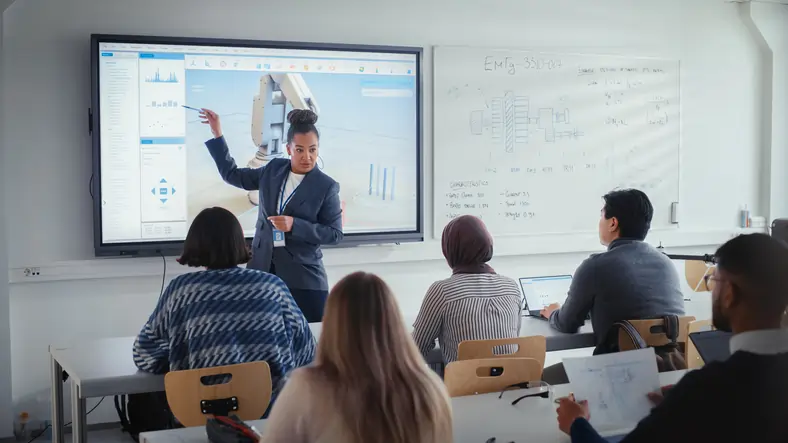
Benefits of integrating technology in the classroom
In the 21st century, the classroom is no longer confined to the traditional realm of chalkboards and textbooks. The integration of technology has emerged as a transformative force, reshaping the landscape of education. This article explores the myriad benefits of incorporating technology into the classroom, shedding light on how it enhances learning experiences, equips students with essential skills, and prepares them for the challenges of a technologically driven world.
Enhanced engagement and active learning
Technology in the classroom has the power to captivate students’ attention and make learning more engaging. Interactive whiteboards, educational apps, and multimedia presentations provide dynamic and immersive content, catering to diverse learning styles. This shift from passive to active learning fosters student participation, critical thinking, and problem-solving skills.
Personalized learning experiences
One of the significant advantages of technology integration is the ability to tailor learning experiences to individual student needs. Adaptive learning platforms use data and analytics to assess each student’s strengths and weaknesses, delivering customized content and pacing. This personalized approach ensures that students can grasp concepts at their own pace, fostering a deeper understanding of the material.
Access to a wealth of information
The internet has democratized access to information, and technology brings this wealth of knowledge into the classroom. Students can explore beyond the confines of textbooks, accessing up-to-date information, multimedia resources, and virtual experiences. This not only enriches their learning but also cultivates research skills and the ability to discern credible sources in the digital age.
Preparation for the digital workforce
In an era where digital literacy is a prerequisite for success, integrating technology in the classroom equips students with essential skills for the future workforce. Familiarity with digital tools, collaboration platforms, and multimedia communication prepares students to navigate the technological landscape of the professional world, giving them a competitive edge in their future careers.
Collaborative learning opportunities
Technology facilitates collaboration among students, both within the classroom and beyond. Cloud-based platforms, online forums, and collaborative software enable students to work together on projects, share ideas, and provide feedback in real-time. These collaborative experiences mirror the teamwork and communication skills essential in the workplace.
Preparation for global citizenship
The interconnectedness of the world is reflected in the digital realm, and technology integration allows students to develop a global perspective. Virtual classrooms, online collaborations with students from different cultures, and access to international resources broaden students’ horizons, preparing them to be informed and culturally competent global citizens.
Efficient classroom management
Technology simplifies administrative tasks for educators, allowing them to focus more on teaching. Learning management systems (IMS), digital grading tools, and communication platforms streamline administrative processes, freeing up time for educators to engage with students on a more personal and instructional level.
Inclusive learning environments
Technology has the potential to create more inclusive learning environments. Accessibility features, such as screen readers, captioning, and adaptive technologies, cater to diverse learning needs, ensuring that all students, including those with disabilities, can participate fully in the educational experience.
Real-world application of knowledge
Integrating technology in the classroom facilitates real-world applications of knowledge. Simulations, virtual labs, and online projects immerse students in practical scenarios, connecting theoretical concepts to tangible experiences. This application-oriented learning enhances retention and helps students understand the relevance of their education in the real world.
Parent-teacher collaboration and communication
Technology enables seamless communication between educators and parents. Digital platforms and communication tools allow for instant updates on students’ progress, sharing of resources, and collaboration on strategies to support learning at home. This partnership between parents and teachers contributes to a holistic and supportive learning environment.
The integration of technology in the classroom is not a mere trend but a fundamental shift in the educational paradigm. It empowers students with the skills they need for the future, enhances the teaching and learning process, and fosters a dynamic and inclusive educational environment. As we continue to embrace the digital age, the thoughtful integration of technology will play a pivotal role in shaping a generation of learners who are not just academically proficient but also technologically fluent and ready to thrive in the complexities of our ever-evolving world.


